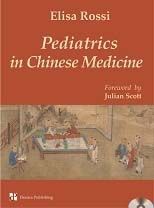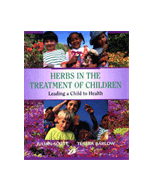We use cookies to make your experience better. To comply with the new e-Privacy directive, we need to ask for your consent to set the cookies. Learn more.
Pediatrics in Chinese Medicine
Children correspond to spring, to dawn, to the rising of yang within yin, to wind. Their qi is characterizsed by impulsive, rapid, sudden movement that is also a feature of any changes in their state of health – young children fall ill very easily, yet respond just as readily to treatment. Chinese medicine, which considers illnesses as manifestations of an imbalance in the body’s energetic system, is very effective in making resources available to enable the child to grow up in a more harmonious and beneficial way.
Main Features • Comprehensive introduction to the unique benefits of Chinese medicine in treating children’s disorders with a detailed description of etiology, pathology, symptoms, diagnosis, and treatment stratagems according to TCM principles.• Clearly illustrated presentation of the main tuina sequences and acupuncture points.• Practical examples of the application of treatment principles and in-depth analysis of 18 case histories giving a useful insight into an assortment of clinical conditions.• Extensive discussion of the relationship between practitioners and young patients (and their parents) and of the difficulties and rewards experienced in clinical practice.• Suitable for all tuina and acupuncture practitioners and for all those interested in treating children in a non-invasive manner.• The accompanying DVD offers a vivid illustration of day-to-day work, demonstrating the use of tuina and acupuncture on child patients in the Xiaoxiao pediatric clinic.
This book has grown out of Elisa Rossi's love of children and her experience at the Xiaoxiao Clinic in Milan (Italy). It should perhaps be subtitled Tuina for Babies and Children, for that is the main emphasis of the book, and seems to be where Elisa's heart is. A large part of the text is devoted to tuina, with acupuncture taking second place (and there is nothing about herbs). Many tuina books are rather scant when it comes to the wider aspects of Chinese medicine, but here there are chapters on causes of disease, diagnosis (specific to children), diet and descriptions of how the main Chinese medical patterns manifest in children. There is also material for a tuina handout for parents so that they can continue treatment at home in between visits to the clinic.
Elisa's love for children and clinical tuina skills are clearly shown in the DVD that comes with the book, where she demonstrates all the major strokes described in the text. She also demonstrates her needling skills, including needling a small child. She involves the child in the selection of the point, and at all stages gets the child's cooperation. I have to say that from my own experience, needling is not always the jolly and happy experience as shown here, and doubtless this is why she does so much tuina. However, the way she connects with her young patients provides an excellent role model for those who are not yet familiar with paediatrics. The degree to which she involves the child in treatment is perhaps a bit more 'yin' than my own paternalistic ways. In addition, a whole chapter is devoted to different aspects of clinical practice, including a brief discussion of the Jungian approach to child psychology and how this impacts on the practitioner-child relationship. It often seems to be the case that those who follow this kind of training end up with more hang-ups than those they seek to cure, but fortunately Elisa has a lot of common sense and genuine love and warmth for children, as well as a lot of experience to temper the fantasy world of Viennese psychiatry.
When it comes to treatment, details are given of patterns and treatments for only a few specific conditions like cough and insomnia, and even these are not given in very great detail. The reason for this is that there is a fresh and unusual emphasis on treating the patterns, rather than the causes or the symptoms. This slight shortcoming is balanced by details of 18 case histories.
How does this compare to my own book written with Teresa Barlow? Which one should you get? Why both, of course! Mine has the disadvantage that it is too long and heavy. Elisa's is just the right weight. Mine has much more details on the causes of disease and how illness fits in with everyday life, with lots of practical details. Elisa's is a simpler approach, giving clearer guidelines on what to do, rather than why to do it. There are other books on paediatrics around, even ones with an emphasis on tuina, but they are nothing like as good as this book, which combines both clarity and simplicity in its approach.
Julian Scott
| Author | Elisa Rossi |
|---|---|
| Publication Date | 1 Jan 1970 |
| Publisher | Donica Publishing |
| Number of Pages | 352 |
| Book Format | Hardback |
* Orders shipped outside of Europe are eligible for VAT relief and will not be charged VAT.




